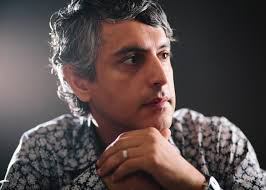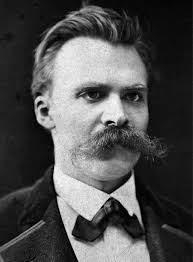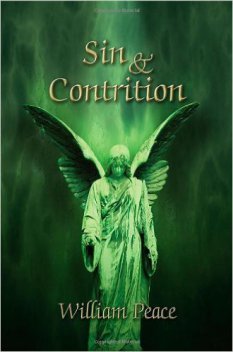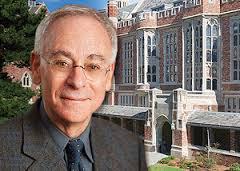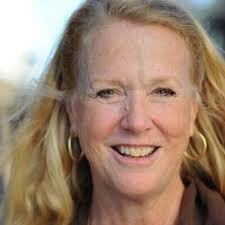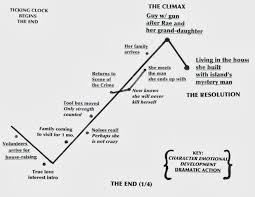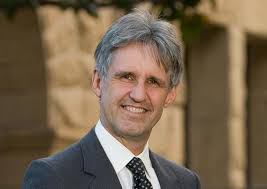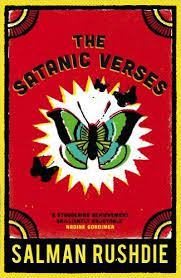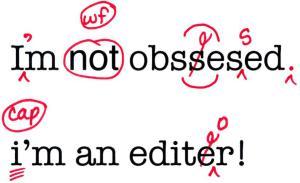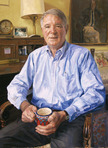William Peace's Blog, page 45
September 30, 2016
Review: Zealot
Leafing through this book in a bookstore, I was attracted by the dedication: “For my wife, Jennifer Jackley, and the entire Jackley clan, whose love and acceptance have taught me more about Jesus than all my years of research and study”. I had noticed that the author, Reza Aslan, had been born in Iran, and now lives in Los Angeles with his wife and two sons. I thought: Here is a book about Jesus, written by someone who was born a Shia Muslim but is married to a Christian; this should be interesting!
Reza Aslan has written two other books with interesting titles: No God but God: The Origins, Evolution and Future of Islam and How to Win a Cosmic War: Confronting Radical Religion.
Reza Aslan
The subtitle of Zealot is The Life and Times of Jesus of Nazareth, and what Mr Aslan does in this biography is to separate the ‘historical Jesus’ from the religious icon whom Christians adore as the son of God. While there is no original research contained in this book, Mr Aslan draws on over one hundred and fifty other published books to reach his conclusions which are largely credible and interesting. He paints a picture of life, culture, politics and religious practices in Palestine in the first century. It is unlikely that He was a carpenter, but because of the minimal use of wood in most houses, He, like many others, was more likely a day laborer, a builder, a tekton, who may have worked in the rapidly growing, near-by city of Sepphoris. Nazareth was, during Jesus lifetime, a town of about 1000 residents, mostly poor peasants and day laborers. There is no evidence that a synagogue existed in Nazareth during Jesus life: the temple in Jerusalem was the religious focus for Jews in Palestine. It is likely that the gospel writers, who began writing at least forty years after Jesus’ death may have assumed that there was a religious meeting place in Nazareth, because by that time the temple in Jerusalem had been destroyed by the Romans. Data suggests that the illiteracy rate among Jewish peasants in the first century was about 97%, yet somehow, Jesus was able to read the Torah scrolls in the synagogue.
Mr Aslan argues (successfully) that Jesus was, like many contemporaries a zealot, that is: someone strongly committed to a cause, and that his most clearly documented cause was the reform of the corrupt Jewish priesthood. In fact this antipathy for the Jewish leadership was still strong when the gospels were written, so that politics may have influences some of the words that the writers put into Jesus’ mouth. For example, Mr Aslan finds it unlikely that Jesus ever met with Pontius Pilot. If such a meeting ever occurred, it would have been an extraordinary event, since in the normal course of events, Pontius Pilot merely signed the death warrant where capital punishment was sought by the chief priest. The scriptural dialogue between Jesus and the Roman essentially absolves Jesus of any crimes and places the blame for his death squarely on the hated chief priest. (I have always wondered why a crowd that brought Jesus so triumphantly into Jerusalem could so loudly demand his crucifixion!)
This biography makes interesting reading, and it does not hesitate to open and explore nearly every controversy about Jesus: His disciples, parents, relationship with John the Baptist, trials, crucifixion, resurrection, what He said or didn’t say, what He may have thought. The controversies involving the leadership of the church after Jesus’ death are also examined. These examinations may extend to the historic translations of the original text, as well as both (or even three) sides of the scholarly arguments. Cultural, political, military, and economic evidence is brought to bear.
This is clearly a scholarly work. In addition to the extensive bibliography there are nearly seventy pages of notes for those who have lingering curiosity about statements made in the main text.
For me, the only disappointment is that Mr Aslan has made no attempt after shattering what may be a childish image of Jesus to reconcile the ‘historical Jesus’ with the Son of God.
September 23, 2016
Review: Nietzsche
I had heard of Nietzsche, the wild German philosopher who averred that “God is dead!” when I was in my late teens. My college roommate seemed to know about him (and Ayn Rand), but I considered anyone who would make such a stupid remark not worthy of further attention. And Nietzsche was not among the philosophers studied in the Philosophy 101 course.
But he came to my attention about 10 days ago when there was an hour-long BBC program about the man and his life. In the program, the “God is dead!” exclamation was attributed to the untimely death of his much-admired father at an early age from a horrible brain disease, and to his view of the culture in late 19th century Europe. As Nietzsche saw it, the culture was wantonly secular, and self-serving. People cared only about entertainment, pleasure, wealth, status, and image. His view was that we had killed God (who had been alive).
The novel I am currently writing has a similar theme: society has turned its back on God. So I bought a copy of Nietzsche by Walter Kaufmann to compare my views with those of the great German philosopher.
Friedrich Nietzsche
Walter Kaufmann (1921 – 1980) was professor of philosophy at Princeton University and a world-renowned scholar and translator of Nietzsche. In fact, Nietzsche was first published in 1950, and has been through four editions, the latest appeared in 1974 in paperback.
It is clear from a mere perusal of the book that Kaufmann devoted much of his life to the study of Nietzsche, who was a difficult and somewhat opaque character, who fought with his mother and sister, and had a tendency to state his case in strong, sometimes extreme, language. For these reasons, he was not well understood and attracted considerable criticism. In fact, he became a hero of Nazi ideology, when some of what he said was either misunderstood or taken out of context. Much of this misunderstanding is owing to his sister who was an ardent Nazi, and who published re-written pieces of his work. Nietzsche abhorred the German state and anti-Semitism. His use of the term ‘blond beast’ was thought to praise Aryan purity, when, in fact, it had reference to the male lion.
The book begins with a history of Nietzsche’s life: born 1844 and died in 1900, having slipped into insanity on about 1889. He was made a full professor of classical philosophy at the age of 24; traveled extensively in Europe, and suffered from ill health. He never married, but he proposed twice to Lou Salomé, a bright, strong-willed woman who was seventeen years his junior.
Nietzsche wrote fifteen books, there are also his lecture notes, his letters and his personal notes. Rather than deal with each of his works one-at-a-time, Kaufmann addresses themes of Nietzsche’s work. This is a better approach since Nietzsche made changes to his views from time to time. Nietzsche was a doubter, a questioner, who took nothing at face value, yet he avoided the label ‘nihilist’ by attempting to establish pieces of a structure to replace what he had torn down. He was anti-Christian because for him it placed too much value on faith and not enough on good works, and he called himself the Antichrist as a result of inconsistencies he perceived in Christ’s messages and actions, and because he refused to accept Christ’s divinity. While he averred that ‘God is dead!’ because he thought people had turned their backs on God, it is not clear that Nietzsche was an outright atheist. He seems to have had a belief in the possibility of God.
One of his better known ideas is that the basic human urge (more important than sex) is the Will to Power. By this somewhat confusing term he meant striving to overcome the faults and weaknesses in ourselves to become as valuable human beings as we could be. For Nietzsche there were three categories of humans which exhibited extraordinary value: artists, saints, and philosophers. When one had overcome one’s faults and weaknesses, one became an ‘úbermensch’ – literally an ‘over man’, which has unfortunately been translated as ‘superman’, which wasn’t at all what Nietzsche had in mind: a sustained, an arduous, personal striving for self improvement which leads to happiness. Coupled to Nietzsche’s concept of the úbermensch was the idea of ‘eternal recurrence’. This latter was the unconditional and infinitely repeated circular course of all things; unfortunately, even if one assumes that time is infinite, this has been proven impossible.
Kaufmann is at his best shedding light on Nietzsche’s intentions, his values, and his thought processes. As a result there is an enormous amount of detail in the book: footnotes and quotations from a wide variety of sources. Occasionally, the logic of an argument becomes murky, but Kaufmann’s straightforward approach clarifies both the distinct character and the great contribution of this philosopher, and restores his stature in the face of unjust criticism, poor health, broken friendships and little happiness.
If one wants to understand Nietzsche as a whole philosopher, this book – rather that any two or three of his own books – is the one to read.


September 17, 2016
Designing a Cover
I probably wrote about this subject quite a while ago, but it’s close enough to my heart that it warrants a re-exploration.
My publisher will produce two cover designs, and the author can have his/her choice. To facilitate the process, there is a questionnaire for the author to fill out. It includes such questions as:
what is the book about?
what ideas do you have for the cover?
I usually respond with a fairly detailed cover idea. In the case of my second novel, Sin & Contrition, I didn’t have an idea, and I probably told the cover designer that the cover should reflect sin and repentance. What came back was amazing, and I liked it immediately:
But with the five novels that have followed since, I have had to make more of a personal effort.
My latest novel, Seeking Father Khaliq, is a modern allegory about one man’s search for spiritual fulfillment. It is set almost entirely in the Middle East, and many of the issues involve Islam. As the title implies a difficult search, I told the designer that I wanted a Middle Eastern maze with the Dome of the Rock (the famous mosque in Jerusalem) positioned at the end of the maze. What came back was a modern, three-dimensional maze with the Dome of the Rock floating on the horizon. It just didn’t work. Next, I found two, antique two-dimensional mazes to choose from, and I suggested that the Dome of the Rock (in miniature) be positioned at the success point in the center. This also didn’t work; I gave up on the maze.
While browsing dreamstimes.com’s collection of mosque photos, I came across a single photo of some people ascending a long flight of stairs toward the Dome of the Rock. That’s it. But meanwhile, my wife, who has a much better eye for things artistic than I, had objected to the font proposed by the designer for the cover: “It’s a dated Western font; there’s nothing Arabic about it!” So, on a page offering ‘free Arabic fonts’, we found one we liked.
What came back from the designer was a lot better, but I asked that the photo be enlarged and positioned at the top of the cover, and that the white highlights be eliminated from the font. We’ll see what comes back, and I expect to introduce the book and its cover to you when it goes to press within a month.
It is true that one can’t judge a book by its cover, but the cover can play an important role in introducing the book to the reader!


September 7, 2016
First Amendment Problems
As you may know the first amendment to the US Constitution covers free speech. There is an article in my alumni magazine which addresses the ‘First Amendment Problem’. You will know that freedom of speech is, to me as an author, a key issue. The article says that hate speech isn’t the issue; politics isn’t the issue; the problem, says the dean of Yale Law School, is that nobody knows how to think about free speech.
The article says,” Take Sorrell v. IMS Health. In 2007, Vermont passed a law restricting the sale of doctors’ prescriptions to drug companies, which were using the records in their marketing. The drug companies, along with data mining companies sued, saying that the law violated their First Amendment rights. Vermont argued that the law regulated commerce, not speech. The case reached the US Supreme Court, where Justice Anthony Kennedy delivered the majority opinion in 2011. Marketing, he reasoned, consists of speech. Therefore, singling out marketers amounts to government censorship.
“Sorrell wasn’t treated like a blockbuster in the press, but it caused a sensation in the legal world. It’s hard to argue with Kennedy’s declaration that ‘the state cannot engage in content based discrimination to advance its own side of the debate’. But if that’s true for pharmaceutical marketers, what else does it apply to? All kinds of commercial and professional regulations restrict speech based on its content. Under Sorrell, can states still require psychologists to be licensed, considering that therapy is speech? Can a public school teacher be fired for telling students that the earth is flat?”
Robert Post
Robert Post, the dean of Yale Law School and an expert on the First Amendment, has been following Supreme Court rulings on freedom of speech for about 30 years. He has been trying to deduce the criteria that the court uses in making its decisions. For example, the Supreme Court recently ruled that a newspaper couldn’t publish confidential information it had obtained through the discovery process in a civil lawsuit. At first, Post disagreed, but he came to the conclusion that the court had made the right decision. “The legal system, Post realised, isn’t an open forum for public debate; it’s a government institution designed for a specific purpose. For the courts to function, judges have to have the power to regulate speech in a trial setting’”
Post’s insight is that “the amendment applies differently is different contexts or ‘constitutional domains’. The most important domain is what he calls ‘public discourse’, because the goal of free speech is self-government. Only speech relevant to that goal should get the highest level of protection. Because public opinion shapes laws in a democracy, people need a chance to affect it: otherwise they won’t experience self-government.”
An interesting example is that some dentists believe that the mercury contained in some dental fillings can leach into the body, but they are punished by their professional regulators for malpractice if they advise their patients to remove the fillings. The same dentists can, without censure, write op-ed pieces setting out their views. This latter case is ‘public discourse’ and has First Amendment protection, while advice to a patient is not ‘public discourse’.
The question for an author, whose work is clearly ‘public discourse’, is: how far can you go? If I were to write a piece belittling or making fun of the Prophet Muhammad (which I have no reason to consider), that would probably be OK, based on the Charlie Hebdo cartoons and The Satanic Verses. But if I were to write a treatise recommending that the readers go and join ISIL, I might well end up in jail (like Anjem Choudary, the UK hate preacher). What’s the difference, legally? Professor Post doesn’t say, but I guess the legal differences arise from two subjective factors:
Public opinion, and
The perceived threat to a democratic form of government


September 2, 2016
J K Rowling’s Writing Tips
Recently, I accompanied my grandchildren on a trip to the Harry Potter exhibition at Warner Brothers Studios near Watford. I have to confess that I am not a Harry Potter fan, but I certainly enjoyed the outing to the exhibition. I found it astonishing the detail that goes into creating the real visual effects that appear on the screen.
Certainly J K Rowling is a brilliant author to have created the seven Harry Potter books which are so popular, worldwide. Yesterday, I ran across her top five writing tips on the Now Novel blog. I thought I would republish and comment on them.
J K Rowling
1. Write in whatever time you have
One of J.K. Rowling’s most famous quotes is: “Sometimes you have to get your writing done in spare moments here and there.” This is crucial advice on writing a book. It’s easy for us to imagine successful writers spending all day penning beautiful paragraphs, but everybody had to start somewhere. For Rowling, that somewhere included full-time work and finding stolen pockets of time to write. Much as it might be a dream to take six months out to write your book, odds are you’re going to have to fit it into your everyday life.
I agree that it is unwise – even couterproductive – to establish an overall deadline (unless you publisher insists on it). For me, the minimum size of a ‘stolen pocket’ is an hour. In less than an hour, I can’t get into a fully creative mode.
2. Planning is essential
Instead of diving right into line 1, J.K. Rowling advises taking the time to plan out the world your books will live in. She took five years to create and develop every last detail of the Harry Potter world. Every part of Rowling’s books was planned and worked out, right down to how the Wizards and Muggles interacted (and the word Muggles, to begin with!) what the education was like, how magic helped in every day life and how the wizarding world of government worked. She also plotted out all the events of the seven books before she started writing the first.
Great if you can do it! I write a two page outline of a novel before I start it, but for me, this is just a framework. I find that characters want to behave differently and therefor events change, or I get an ‘inspiration’ that causes me to deviate from the original plan. I depend a lot on these inspirations!
3. Rewriting is just as essential
You would think after five years, J.K. Rowling would just be able to dive right in and write the whole of the first Harry Potter book, Harry Potter and the Philosopher’s Stone, without much rewriting. She rewrote the opening chapter of her first book a total of fifteen times, however. It’s easy to imagine published authors writing with the greatest of ease, but actually the process is just as difficult for them.
I agree! I don’t think I’ve ever reached fifteen re-writes, but four of five is not uncommon. For me, the scope of a rewrite tends to decrease over time: after a major rewrite, what follows tends to be less and less radical.
4. Be aware of plot and pacing
Even when you’ve plotted out all seven of the books you want to write in a series, you can trip yourself up. In fact, that’s one of the big things to be aware of when you’ve done the necessary planning: even though you know what’s going to happen next, your readers shouldn’t. They need to have a sense of excitement and uncertainty as the plot and pacing unfolds because this is where magic lies. After J.K. Rowling finished the first book in the Harry Potter series, she realised she’d given away the whole plot of the series. So she had to rewrite it, and hold back a number of integral plot points.
I tend to make changes to the plot once I’ve started writing a novel. These changes make the novel more interesting, more exciting, or better convey the overall message of the work. But I agree that one has to be careful that the revised plot flows seamlessly with no inconsistencies.
5. Write your passion
Perhaps a favourite J.K. Rowling quote is: “What you write becomes who you are… So make sure you love what you write!” One of the reasons the Harry Potter books are so infectious is because you can tell she really loves the world she created – and all the characters in them. If you’re going to approach your book in a half-hearted manner, there’s no point even beginning it. Make sure you’re passionate about what you write and you’ll draw your readers along with you.
This is very true! Occasionally, I find that the work is starting to lose interest for me. Then I know that something is wrong and significant changes are required. For example, I gave a literary friend a draft of Sable Shadow & The Presence before it was finished. His comment: “It’s boring.” I agreed, and I put it aside while I wrote Hidden Battlefields. When I came back to the manuscript it was with new ideas and new enthusiasm. When I finished, my friend (like many others) gave it a very good review.


August 16, 2016
Use of a Plot Line
In the August issue of The Florida Writer, there is an article by Martha Alderson; “How to Use a Plot Planner”.
Martha Alderson is a historical novelist and the best-selling author of The Plot Whisperer. She is founder of PlotWrMo and has worked with hundreds of writers in plot workshops, retreats, and plot consultations for more than fifteen years. Her clients include bestselling authors, New York editors, and Hollywood movie directors. She has authored six additional plot books.
Martha Alderson
In the article, she says that a Plot Planner “helps you to visalise your story. Use it to do the following
Place your ideas and sequence your scenes to greatest effect
Experiment with changes in the storyline to evoke stronger reaction and interest from the reader
Get a sense of how your story is paced
Generate ideas to better develop your story
Solidify your understanding of the story’s core elements
Ensure you understand the story you are presenting”
A Plot Plan is a line which rises from left to right. The line recedes when a crisis or moment of tension is past, and the steepness is an indication of the rate of increase or decrease in the tension. An example is shown below.
A Plot Planner
“At its core the Plot Planner is merely a line that separates scenes filled with conflict and excitement (which appear above the Plot Planner line) from those that are passive, filled with summary and backstory, or heavy with information (which appear below the Plot Planner line).
“In every great story, a protagonist pushes toward something (her goal) while forces both internal and external attempt to thwart her progress. This struggle between the protagonist and the antagonist sends the energy of your story soaring. The more powerful and formidable the antagonists, the greater the intensity, drama and excitement in the scene.
“Antagonists fall within one of six standard categories:
Another character: family, friends, so-workers, enemies, lovers
Nature: hurricanes, earthquakes, floods, natural law, physical disabilities
Society: religious institutions, government, customs, gangs
Machine: cars, robots, spaceships, motorcycles
God: spiritual beliefs
The protagonist: inner life, past mistakes, fears, flaws, doubts, moral choices, willpower
“Like the surface of the sea with its white caps, waves and swells, the external, griping territory of the dramatic action, when your protagonist is out of control, fearful, lost, confused, or under the power of an antagonist, belongs above the line. All scenes that show complications, conflicts, tension, dilemmas and suspense where the protagonist is forced away from her goals belong below the line.
“Scenes that show action where the power is somewhere other than the protagonist should go above the line: conflict, catastrophe, betrayal, deception, vengeance, rebellion, persecution, rivalry, conspiracy, suspicion. Scenes that show emotional development of the protagonist also belong above the line: failure to cope, revenge, self-sacrifice, loss of control, anger, poor decision-making, grief, fear, greed, unhappiness, personal flaw, loss of power.
“Below the line is where the mystery lies. Scenes that belong below the line show the undertow: the internal, emotional territory of the protagonist. Much of the character’s emotional development is placed below the line. Any scenes which slow the energy of the story or in which the power shifts back to the protagonist belong below the line. Scenes where the protagonist it proactive rather than reactive, or is deciding on the best course of action and then taking it belong below the line. These scenes include: a lull in the conflict, tension and suspense, a sharing of information with the reader by telling rather than showing. Scenes in which the protagonist is doing one of the following also belong below the line: remaining calm, coping, solving problems, staying in control, planning, searching inward, and contemplating.”
My reaction is that there are some interesting concepts here, particularly in the differentiation between what goes above or below the line, and also the various notions about character development and the management of tension is a story. While I think it is very useful to think explicitly about character development, the maintenance of tension, and the purpose of each scene, I don’t think that I would want to plot out each chapter or the whole story. I think that in the future, when I’m writing a summary of what will happen in each chapter, I will also mention why it is happening.
August 8, 2016
Amazon’s First Bookstore
Amazon opened its first physical bookstore in Seattle, Washington on 2 November last year. At first glance it looks like any other bookstore, but there are important differences. All the books are priced at the same prices as on amazon.com. The books are shown cover-out, rather than spine-out. The books are arranged by genre and by the number of stars received on Amazon.com. Included by each book is a review that a customer has placed on the Amazon website. The photos below are from Time Magazine.

General View of Amazon’s First Bookshop

Reminder about price policy

Notice the reviews below each book

There is also a Kindle station

There is a Most-Wished-For section reflecting habits on amazon.com

Behind the checkout counter, Amazon displays books that are popular that week.
In the store, customers can try out Amazon’s electronic gadgets: including the Fire TV streaming device, Fire tablet and Kindle electronic reader.
The prices, the cover-out displays, the star ratings and the customer reviews will certainly be attractive to many customers. Will other book sellers move to copy Amazon? I doubt it. The prices, star ratings and customer reviews are unique to Amazon, as are its electronic gadgets. Over the weekend, I visited a Waterstone’s bookstore near home, and a found that selected books have a small card below them on which were hand-written comments by store employees. While the cover-out display is attractive, I doubt that it is a feature which will be widely copied, because it results in a dramatic reduction in the number of titles which can be displayed is a store of a given size.
Still the store format does an excellent job promoting the Amazon brand, even it, at the prices charged, the staff employed, and the brick and mortar rental, it will probably lose money – unless the store sells a lot more than a conventional bookstore of the same size.
July 31, 2016
Review: Why the West Rules ~ for Now
I was given this imposing book by a friend who thought highly of it. I say ‘imposing’ because it is 645 pages long (including one appendix but not counting 100 pages of notes and index). I’ve had time to read it because I’m on holiday in Sicily. Not only is it imposing but it is very interesting and thought-provoking. The book examines 16,000 years of human history (and other forms of data) to explore why the West has more power than the East, and what is likely to happen in the future.
The author, Ian Morris, was born in 1960; he is currently Willard Professor of Classics at Stanford University. He is an archaeologist as well as an historian, and the interesting aspect of this book is that in relies of archaeological, biological, geological, linguistic, genetic, social as well as historical evidence. Published in 2010, the book has won many awards and has been translated into 13 languages.
Ian Morris
The book is a ‘brief’ summary of human history beginning at the end of the last ice age (but with with an exposition of the prior evolution of humanity). Professor Morris uses four indices of human development to quantify the progress of civilisation in the East and the West. He provides captivating commentary on why the various indices grew or shrank over time. His indices are social (the size of the largest city in the region); military (the most powerful military force in the region); technological (who had the technological advantage); and who was making the most use of energy. There are plenty of brief descriptions of the brilliant (or catastrophically stupid) moves of the movers and shakers – eastern and western -in each age, but he demonstrates that it was not their brilliance or stupidity that really changed history. Nor was it political or cultural or genetic. It was geography which finally gave the West a major advantage at the end of he eighteenth century.
Looking ahead, Professor Morris concludes that the East will take over the lead in the twenty-first century: largely based on China surpassing the US in financial terms. But he also says that it may not matter who ‘rules’, because sometime in this century there is more likely to be one world than an east and west. Looking still further into the future, he postulates two major scenarios: Singularity where human intelligence becomes so well integrated with computers that all intelligence becomes shared, and humanity becomes something altogether different; and Nightfall where humanity is essentially wiped out by a catastrophe such as nuclear war or environmental disaster. (There are plenty of other undesirable scenarios suggested.) At the conclusion, he hopes that Singularity will prevail.
This book is very thought-provoking, interesting reading, calling as it does on a wide range of specific data, and events in human history. I found it interesting that religion had almost no part to play in human development. Instead, the steadfast theme of human brutality is omnipresent. War, it seems, was always the preferred option. Professor Morris attributes human development to fear, greed or laziness, saying that all human innovation arises from one of those three motivations. Sadly, I’m afraid he is right So, in addition to giving the reader a fascinating lesson in human history, Professor Morris provides a rather depressing picture of human character.
I must say that I don’t necessarily agree that the East will – via China – rule the world. Economic, military or political disaster could overtake China (or the US for that matter). But I do agree that we are converging on One World rather than East vs West.
This is a brilliant book, worth all the time it takes to consume it all!


July 14, 2016
Review: The Satanic Verses
I decided to read this novel by Salman Rushdie because I had not read any of his work, because this particular novel is famous, and because of my interest in better understanding Islam. The novel is famous for the fatwa issued by the Ayatollah Khomeini calling for the death of Rushdie for having committed blasphemy and for mocking the Islamic faith. There was a bounty of £2.8 million on Rushdie’s head and several failed assassination attempts; others associated with the novel were not as fortunate: Hitoshi Igarashi the Japanese translator, was stabbed to death on 11 July 1991, and a number of attempts were made on the lives of others. The novel was published in 1988, and it was shortlisted for the Booker Prize, but won the Whitbread Award for novel of the year. The fatwa was issued on 14 February 1989. In the UK, 13 Muslim barristers drafted an indictment for the High Court attempting to justify a charge of blasphemy. This attempt failed and blasphemy is no longer an offense under English law. For years, Rushdie lived at no fixed abode under Special Branch protection. In 1998, Iran issued a conciliatory statement and Rushdie declared he would no longer live in hiding. The Iranian state news agency reported in 2006 that the fatwa would remain in place permanently since fatwas can only be rescinded by the person who first issued them, and Khomeini had since died.
In the context of blasphemy, it is worth a brief description of the origin of the term ‘satanic verses’. Muhammad was living in Mecca at the time and he was experiencing difficulty persuading powerful Meccans to accept that he was the prophet of God. There is a theory – repeated in Rushdie’s novel – that, as a concession to these men, he gave brief permission for prayer to three popular idols. What is certain is that Muhammad originally recited several verses naming the idols, praising them and indicating that they should not be neglected. Muhammad then inserted three replacement verses which say that the idols are only ‘names’ and that ‘God revealed no authority for them’. His explanation for the change was that Satan had managed to slip in the verses without him knowing it.
In the novel, Muhammad (called Mahound) comes across as a weak, indecisive individual who uses religion for his own benefit. But the sequences in the novel involving Mahound are contained in the dreams of the character, Gibreel Farishta, who is mentally ill and who believes that he has become the archangel Gabriel, so these characterisations cannot be said to represent the author’s personal views.
The central plot of the novel is that two Indian Muslim actors fall from the sky over the English Channel when the flight they are on is blown up. Miraculously, they both survive, and they take on the personalities of the archangel Gabriel (Gibreel Farista) and the devil (Saladin Chamcha). Each of them has difficulty being accepted in London, each finds to a prior love, and each returns to his previous occupation. Chamcha seeks revenge on Farista for having deserted him after their fall from the sky, and he stokes Farista’s pathological jealousy, destroying his love relationship. Farista realises what his colleague has done and he forgives him. Nonetheless, Farista kills his lover, Alleluia Cone, and commits suicide. Chamcha returns to India and is reconciled to his dying father.
The novel – at 547 pages – has a great deal beyond this simple plot, including dream sequences involving the prophet Mahound. There are also sequences involving relationships of the primary characters with lovers, friends and acquaintances.
This is not an easy book to read. The sentences are long, sometimes complex, and the references to characters, places and things unfamiliar. There is one sentence 146 words long. Being somewhat familiar with Islamic history, I recognised some to the dream characters, but I could have benefited from a working knowledge of Indian mythology. It is also not easy to follow what is going on: is this part of a dream or reality? Having said that, I did find much of the writing uniquely engaging.
The feelings one encounters in reading the book are doubt bordering on hopelessness with some offsetting glimpses of humour. The doubt has to do with the purpose of life, religion, acceptance as an individual, and perception vs reality.


July 4, 2016
Manuscript Editing
Yesterday, I received the edited copy of my seventh novel back from the editor. For me, the way it works is that I – as the author – am responsible for professional editing of my books. The publisher will arrange for editing, but the author has to pay for it as a part of the co-operative publishing deal. On one occasion, I used the publisher’s editor, but never again. It was a less expensive fee than my usual editor, but a lot more costly in my time and aggravation. That editor didn’t understand that her job was just to check the grammar, spelling, punctuation and syntax of the manuscript. She did that (sloppily), and many of the changes she made were incorrect, and had to be reversed. This made me wonder how competent she was at finding the real errors I made. But what really irritated me was that she made changes to the text so that the meaning I had intended was lost. Clearly, she didn’t like the characters or my plot.
Vonda works for a large editing company and she has edited the other six of my novels, including my latest, which is 108,000 words. (That will work out to be about 250 pages, and her company’s fees were just under $1000.)
To give you a sense of what she wanted me to change:
too many commas
too many colons
English English to American English spellings (my publisher is American)
removing the hyphens from compound noun; for example hang-dog becomes hangdog
catching instances where two-letter words were wrong; for example: ‘in’ appeared in place of ‘it’ or ‘is’
The above changes were made after I had read through the manuscript at least three times and my wife had read it once! Sometimes we see only what we think should be there!
And then there were her really useful comments:
there were two cases where I misspelt the name of the Egyptian president as ‘Al-Sisi’ when I had previously spelt it correctly as ‘el-Sisi’.
Similarly, in later paragraphs, I had misspelt the Anglicized version of an Arabic surname.
In one case she questioned the identity of the speaker (it could have been either of two characters).
And one case where she questioned my translation of an Arabic word. (She was right.)
She made the following general comment: “This is somewhat of a departure from your previous works — more philosophical and thought-provoking. The characters are, as usual, well-drawn, believable and sympathetic, and your descriptions of all the places Kareem visits made me feel as if I were right there with him.”
There is another step of editing: when the manuscript is laid out for printing, there are inevitably new errors – particularly in format – which creep in, and I will have to read it again carefully.
I haven’t told you much about this latest novel, because it hasn’t been formally copyrighted yet, but please ‘stay tuned’!



